Introduction
Leopards are big cats who live in Central Asia, China, and India, and across sub-Saharan and northeast Africa. The African leopard (Panthera pardus) is found in five of Uganda’s National Parks: Kidepo Valley, Murchison Falls, Queen Elizabeth, Lake Mburo, and Semiliki National Park.1https://ugandawildlife.org/animals/leopard/ Despite the wide range across Uganda, the African leopard is on the brink of extinction.2https://www.iucnredlist.org/species/15954/215195554#population
Because leopards are such secretive animals, there is no way to know exactly how many exist in the wild but, in 1987, it was estimated that there were just over 4,000 leopards in Uganda. However, more recent evidence suggests that this is a gross overestimate,3http://www.catsg.org/fileadmin/filesharing/3.Conservation_Center/3.5._CITES/3.5.3._CoP/2007_June/cop14_IUCN_Analysis_Prop_03_Panthera__pardus.pdf and some sources say there are less than 3,000 leopards left today.4https://www.newvision.co.ug/news/1163581/uganda-start-leopard-hunting-sport The healthiest population of leopards in Uganda inhabits Queen Elizabeth National Park, described as “one of the country’s last strongholds for this species.”5https://destinationuganda.com/animals/leopard/ Leopards live up to 12 years in the wild.
Fascinating Facts
Leopards like alone time

Unlike lions, male leopards spend most of their time alone and females only with their cubs. The only time adult leopards come together is to mate. But because they live alone, they don’t reproduce as much, or as successfully, as animals that live in groups.
Leopards weigh about the same as a human
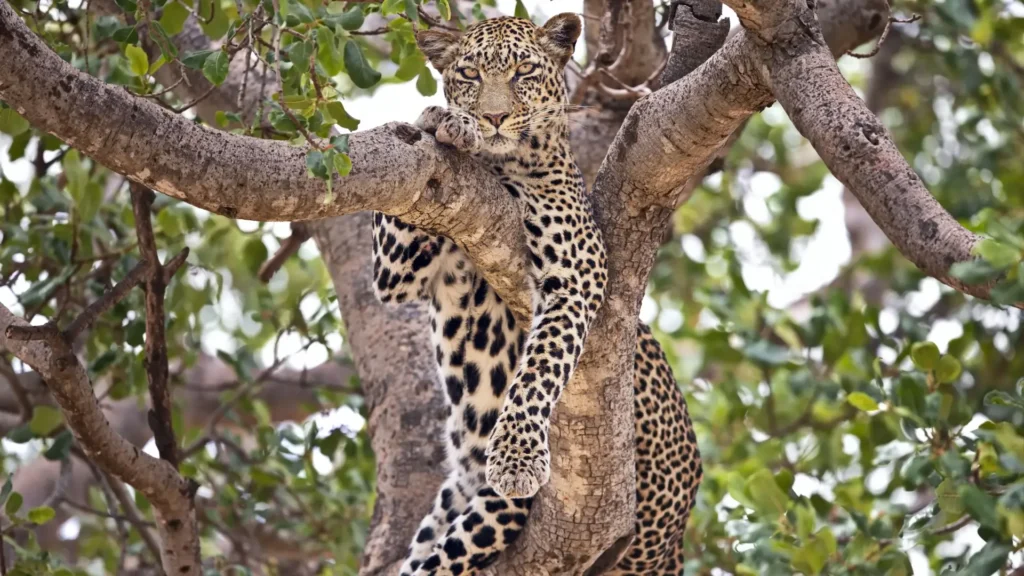
Male leopards weigh between nine and 14 stone (60 and 90 kg), and females are a lot smaller at between five and eight stone (34 and 50 kg). But although they’re the same weight as humans, they’re much stronger. A leopard is about seven times stronger than a human and can drag a carcass three times their weight up into a tree so it doesn’t get stolen by other predators.
Not all cats are scared of water
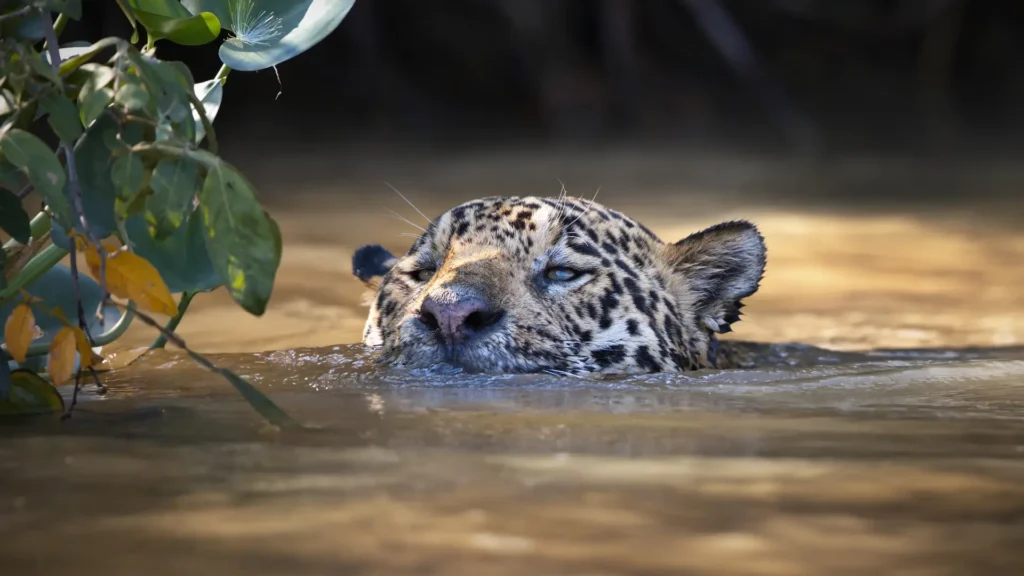
Leopards are excellent swimmers and can even hunt fish. Leopards are ambush hunters so they’ll stay close to the ground and sneak up on giant catfish in shallow pools and streams, before pouncing and using their mouth and claws to grab the unlucky fish.
Leopards like the high life
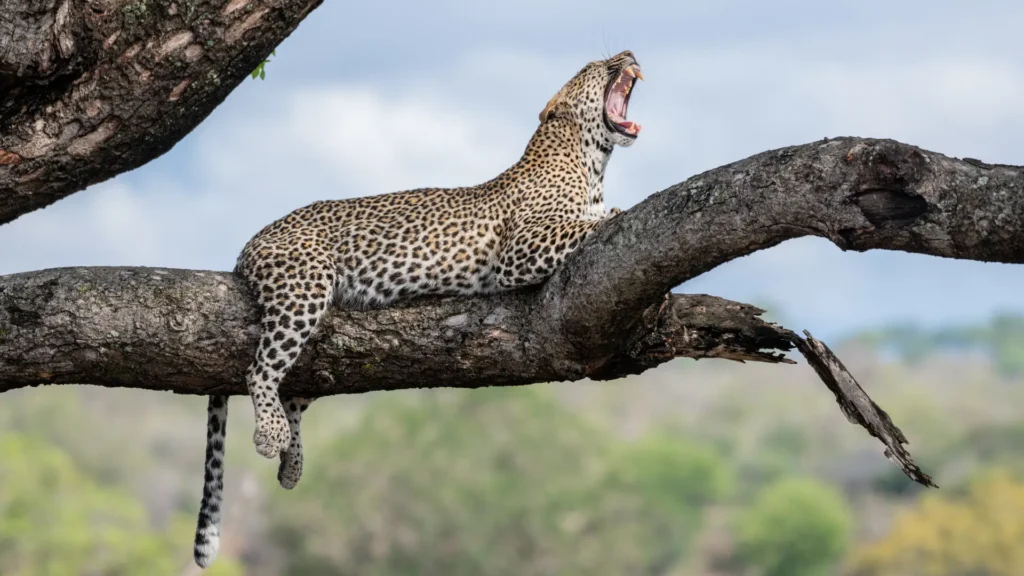
Leopards spend a lot of time climbing trees and hiding in the branches. When an unsuspecting victim, such as a hare, antelope or lizard, walks beneath, the leopard will speedily pounce from above to catch his or her prey.
Leopards are highly adaptable
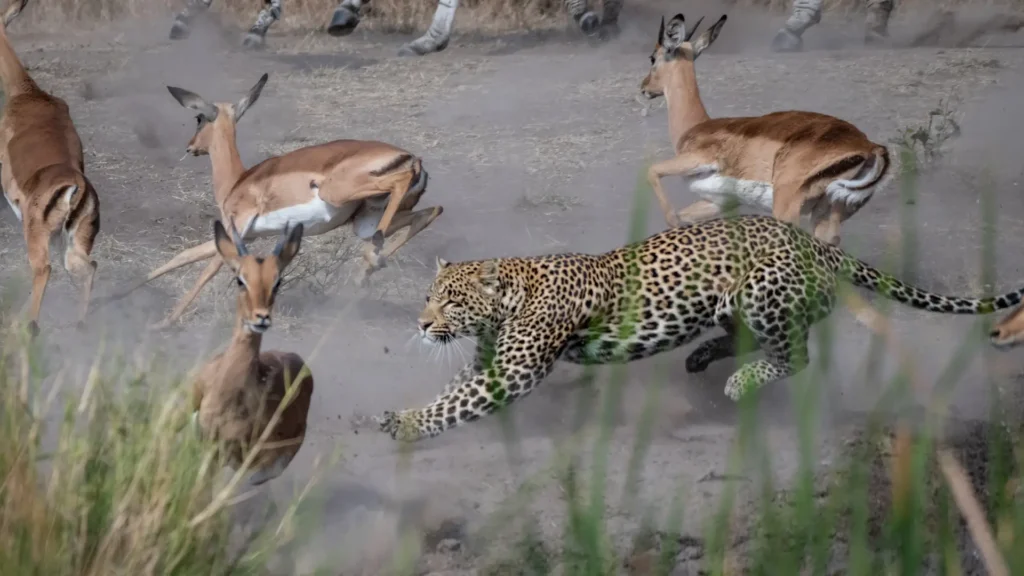
Despite the saying “a leopard can’t change its spots”, they are actually very adaptable animals and can survive in many different environments and climates. They are found in both hot and cold environments, in tropical jungles, grasslands and deserts.
A leopard’s spots are both inherited and unique
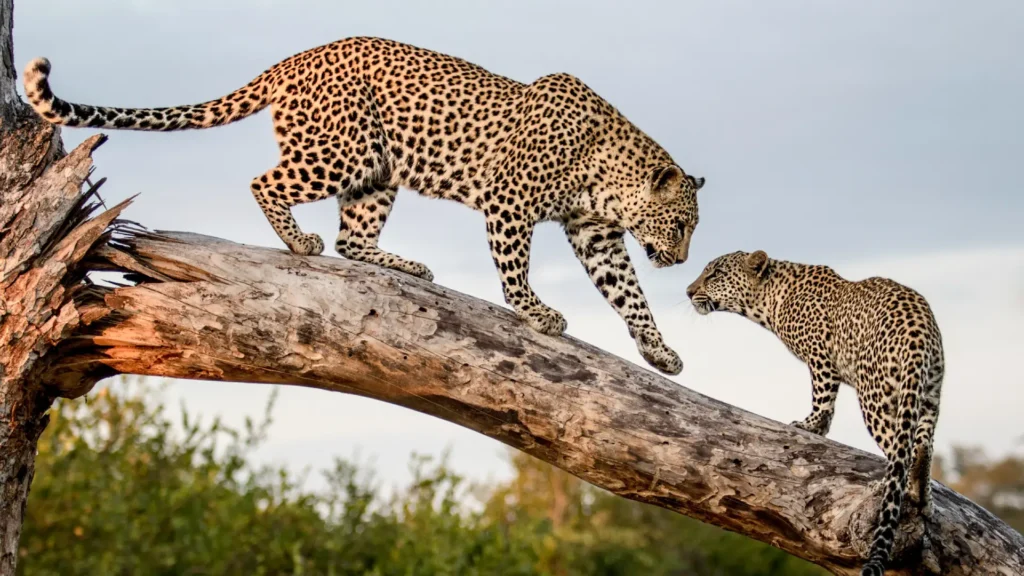
The spots and rosettes around a leopard’s whiskers are as individual as a human fingerprint. But although no two leopards share exactly the same pattern, there are similarities between a mother’s markings and her cubs.6https://africageographic.com/stories/spot-the-difference-do-leopards-inherit-their-patterns-from-their-mothers/
It’s not easy being a single mum
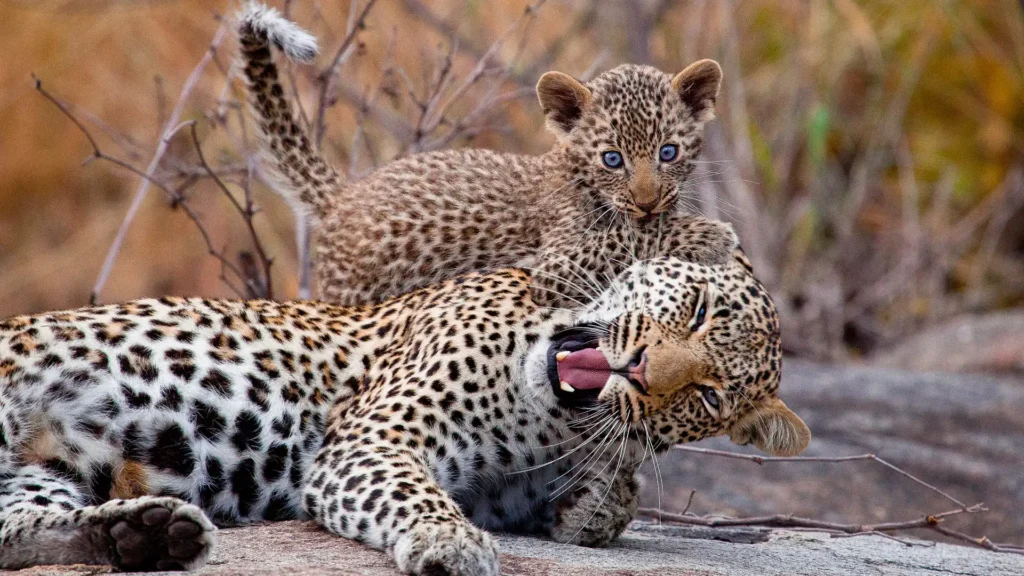
The mother leopard is pregnant for three months and after giving birth to between two and four cubs, they stay together for up to two years. During this time, the cubs play and learn to hunt together. Leopard mothers give birth every 15 to 24 months so spend most their life with their cubs. They have a much harder time than lions, as they have to raise and protect their cubs on their own, without the help of a pride.
Threats to African Leopards
The biggest threat to the leopard’s survival is human activity, in the forms of hunting, habitat loss and human-wildlife conflict.7https://www.awf.org/wildlife-conservation/leopard
Hunting
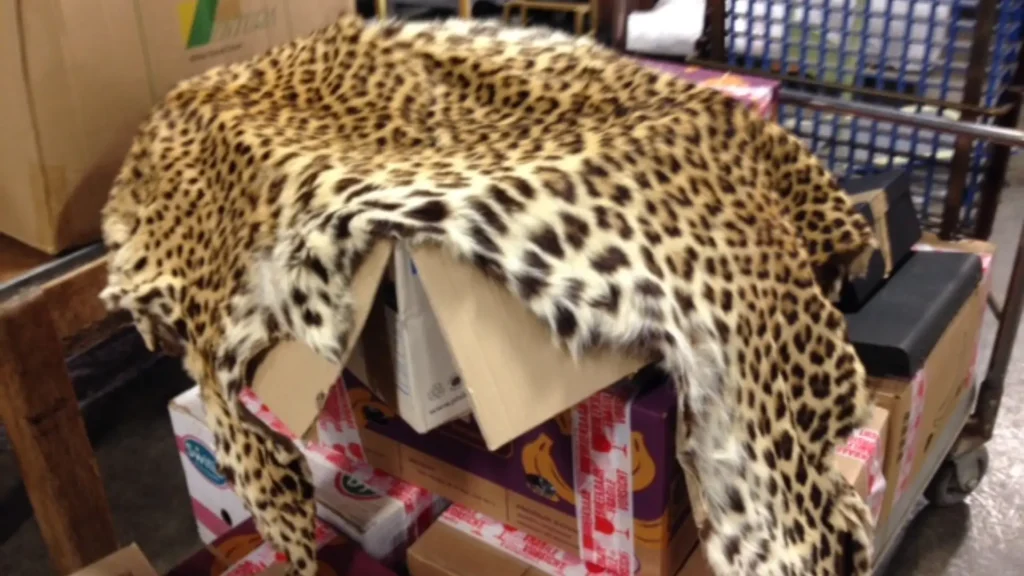
Big cats, and especially leopards, have long been a target for trophy hunters due to their beautiful fur. According to a 2018 report, leopard skins are the most commonly seized item being illegally traded from Uganda.8https://www.traffic.org/site/assets/files/8460/uganda_wildlife_assessment.pdf Despite being considered a vulnerable species, Uganda’s Ministry of Tourism, Trade and Industry and the Uganda Wildlife Authority allow leopards outside of the national parks to be hunted for sport.9https://link.springer.com/article/10.1007/s42991-022-00324-5 Leopards had been listed among CITES’ most vulnerable animals since 1975 but in 2007, the ban on hunting leopard was lifted, allowing 28 leopards a year to be killed by trophy hunters.4https://www.newvision.co.ug/news/1163581/uganda-start-leopard-hunting-sport The Ugandan government argues that the money made from trophy hunting aids conservation efforts,, improves local views of the leopard, and appeases livestock farmers who see leopards as a threat to their farmed animals. However, the only ones who are benefiting from the hunting of leopards are the sadistic people who like to kill endangered animals for fun.
Habitat loss
In the last 20 years, leopards across Africa have lost 31 per cent of their natural habitat.7https://www.awf.org/wildlife-conservation/leopard This is due to new roads fragmenting the landscape, the destruction of jungles and forest to convert it to agricultural land, and the development of settlements for the ever-growing human population. In the last 100 years, Uganda has lost 42 per cent of its forest cover, decreasing from 54 per cent to 12 per cent in 2017.10https://illuminem.com/illuminemvoices/deforestation-in-uganda-causes-and-recommendations Encroachment into Queen Elizabeth National Park by illegal cattle ranchers is common11https://conbio.onlinelibrary.wiley.com/doi/abs/10.1111/cobi.12538?campaign=woletoc and the National State of the Environment Report for Uganda 2014, attributes this to “the increasing demand of land for agriculture and fuel wood by the rapidly increasing population growth.”12https://nema.go.ug/sites/all/themes/nema/docs/FINAL%20NSOER%202014.pdf
Around 80 per cent of Ugandans depend on growing crops3http://www.catsg.org/fileadmin/filesharing/3.Conservation_Center/3.5._CITES/3.5.3._CoP/2007_June/cop14_IUCN_Analysis_Prop_03_Panthera__pardus.pdf and as the population grows, more land is required to feed them. Land is therefore taken from the wildlife of Uganda and turned into farmland for crops and farmed animals. In 2000, the Ugandan government launched a Plan for the Modernisation of Agriculture which intensified farming and more recently stripped some protected rainforest of its protected status so the land could be used for agriculture.3http://www.catsg.org/fileadmin/filesharing/3.Conservation_Center/3.5._CITES/3.5.3._CoP/2007_June/cop14_IUCN_Analysis_Prop_03_Panthera__pardus.pdf All this increases the threat to leopards and the occurrences of human-wildlife conflict.
Of course, a growing population needs food but it would be much more sustainable to meet these needs through the growing of crops instead of farming animals. Meat and dairy foods require by far the most land and resources – this is because land is not only used for grazing but also for growing food for the animals. The more animal-based foods we eat, the more endangered our forests become. However, vegetable, pulse and grain crops are a far more efficient way to feed the growing population and use less land and other natural resources. A vegan diet is associated with only half the cropland demand, grazing intensity and overall biomass harvest of meat-based diets so switching to a vegan diet would have a phenomenal impact on reducing deforestation and land degradation in Uganda.13https://www.nature.com/articles/ncomms11382
Human-wildlife conflict
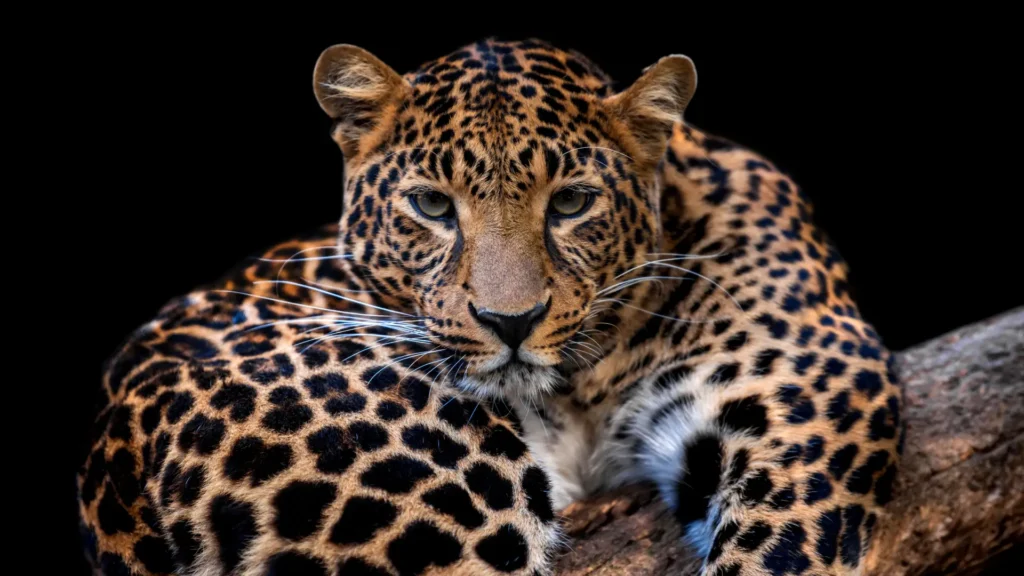
As the human population of Uganda increases, people are infringing more and more into the territory of leopards. Because of this, leopard encounters are becoming more frequent. Most local people have an entirely negative view of leopards; rather than seeing them for the beautiful animals they are, they see them as pests. Livestock farmers are leading the cruel charge against leopards as they see them as a threat to their livelihood. If a leopard kills livestock, they are hunted down and callously killed by the community in an act of revenge, either directly or by poison. But the truth is, leopards have been forced to kill farmed animals because humans have invaded their natural habitat, destroyed their forests and deprived them of natural prey.
References
References
- 1
- 2
- 3
- 4
- 5
- 6
- 7
- 8
- 9
- 10
- 11
- 12
- 13

